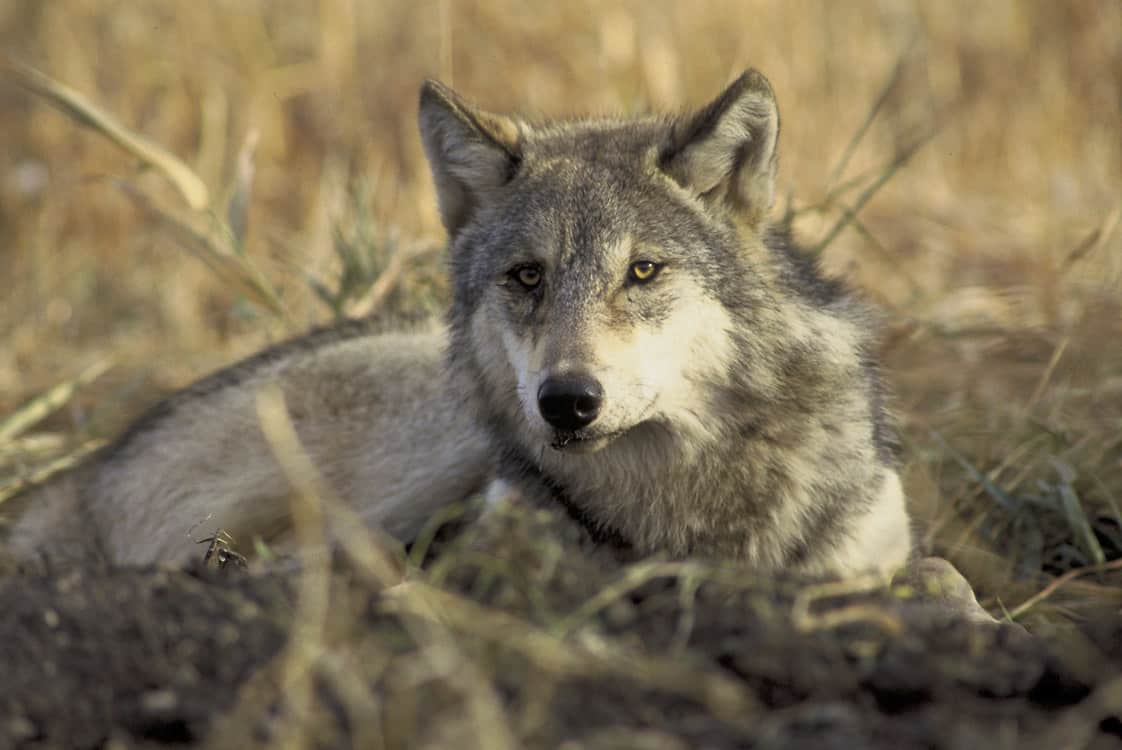Wolf OR7 Enters California
OutdoorHub 12.29.11

The gray wolf that was wandering in southern Oregon has crossed the California border. According to the Oregon Department of Fish and Wildlife (ODFW) this animal is a 2 ½ year old male formerly from a pack in northeast Oregon. Since the animal has been collared with a Global Positioning System (GPS) device that periodically transmits its location, biologists have been able to document its travels since it was collared in February 2011. Based on the GPS data, he is now more than 300 miles from where his journey began.
His journey, in total, has been more than twice that far with many changes in direction. Several times he has reversed direction and returned to previous locations. Today, the California Department of Fish and Game (DFG) learned that this wolf, designated OR7, crossed the state line into northern Siskiyou County yesterday. Tracking data puts his most recent location as a few miles south of the Oregon border. It is not possible to predict his next movements which could include a return to Oregon.
DFG continues to collaborate with ODFW and expects to receive daily location data. This information is transmitted daily when atmospheric conditions permit. DFG will be sharing only general location information as this wolf, while in California, is protected as endangered under the Federal Endangered Species Act.
“Whether one is for it or against it, the entry of this lone wolf into California is an historic event and result of much work by the wildlife agencies in the West,” said DFG Director Charlton H. Bonham. “If the gray wolf does establish a population in California, there will be much more work to do here.”
Any wild gray wolf that returns to California is protected as endangered under the Federal Endangered Species Act, administered by the U.S. Fish and Wildlife Service (USFWS).
DFG has been following the recovery and migration of gray wolves in western states with the expectation that at some point they will likely reach California. The last confirmed wild gray wolf in California was killed in Lassen County in 1924. The available historic information on wolves in California suggests that while they were widely distributed, they were not abundant. DFG has been compiling historic records, life history information, reviewing studies on wolf populations in other western states, enhancing communication with other agencies and training biologists on field techniques specific to wolves. This effort is to ensure that DFG has all necessary information available when needed, it is not a wolf management plan and DFG does not intend to reintroduce wolves into California.
There are more than 1,600 wolves in the northern Rocky Mountains following a federal reintroduction effort which occurred in the mid-1990s. In 1999 a single wolf crossed into Oregon from Idaho, after nearly a 60-year absence in that state. There are now at least 24 wolves in Oregon in four reproducing packs. It has taken an additional 12 years for the first wolf to now reach the California border. This particular animal is exhibiting normal dispersal behavior for a young male and there is no way to predict whether he will stay in California, return to Oregon, or travel east into Nevada. Eventually, DFG expects that other wolves will reach California. Whether this will lead to the establishment of packs or simply transient individual animals is unknown.
Gray wolf recovery in other western states has been controversial, particularly regarding impacts on prey populations, livestock depredation and human safety. There have been instances where gray wolf predation has contributed to declines in deer and elk populations, however, in most cases, predation has had little effect. Some gray wolves have killed livestock – mostly cattle and sheep – while others rely entirely on wild prey. In other western states the impact of depredation on livestock has been small, less than predation by coyotes and mountain lions, although the effect on an individual livestock producer can be important, particularly when sheep are killed.
Concerns about human safety are largely based on folklore and are unsubstantiated in North America. In recent years there was one human mortality in Canada caused either by wolves or bears and one confirmed human mortality in Alaska by wolves. Based on experience from states where substantial wolf populations now exist, wolves pose little risk to humans. However, DFG recommends that people never approach a wolf, or otherwise tamper with or feed a wolf. More about how to avoid human-wildlife interactions can be found on DFG’s website at www.dfg.ca.gov/keepmewild/.

